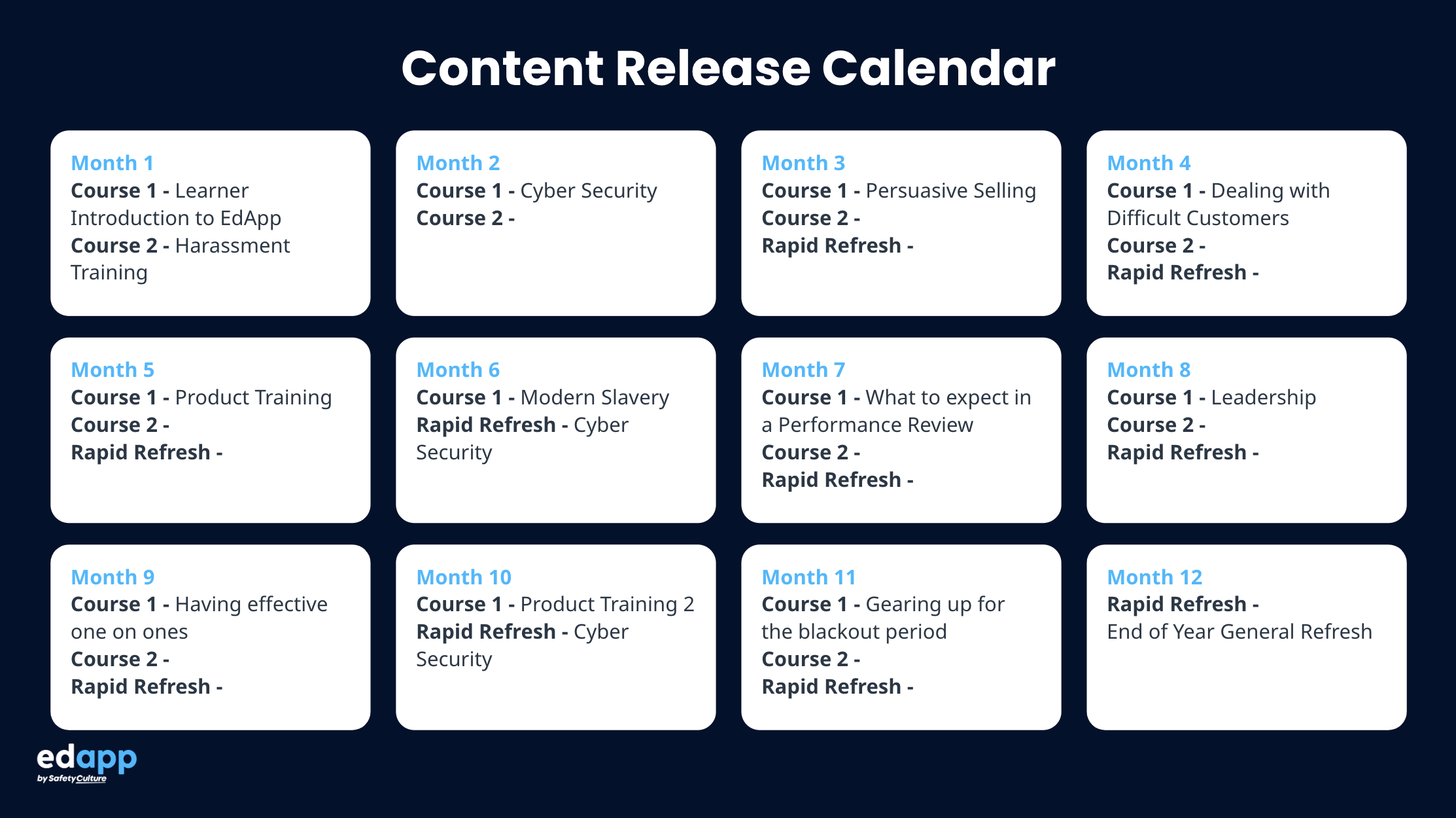Intentionally structure microlessons to deliver effective and engaging training.
Contents
- Bite-sized learning
- Captivate your learners
- Drip feed your content
- Set clear learning objectives
- Use games and rewards
Feel free to also watch our 5-minute video 😊
1. Bite-sized learning
Courses and lessons should be structured to make information access easy.
Adults learn while on the job, so segment information into short lessons and they’ll be able to access or revisit lessons they need.
Rule of 👍🏼
No more than 15 slides per lesson (or around 5 minutes of learning)
2. Captivate your learners
Use visuals that captivate your learner. The Vertical Series template effectively showcases text and imagery. Frame the key concepts in a way that is relevant to your learners' day-to-day work.
3: Drip feed your learning content over the year
By dripping your microlearning content throughout the year, you create a continuous learning journey that keeps your team engaged, prevents information overload, and boosts long-term retention.

Rule of 👍🏼
Create a calendar with around 1-2 courses per month to create a habit of learning in small doses.
4: Clear Learning Objectives
People like to know what they're getting into.
Clearly outline the learning objectives at the beginning of each microlesson. This sets expectations and gives your learners a sense of purpose. When learners understand what they're supposed to achieve, they're more likely to complete the lesson and fulfil those objectives.
5. Reinforce with Activities and Games
Implement achievements, leaderboards and real rewards to create a competitive and fun learning environment. Reward your learners for their achievements – it could be as simple as a certificate of completion, recognition in the company newsletter, or a $20 gift voucher. These incentives can be powerful motivators to boost completion rates.
